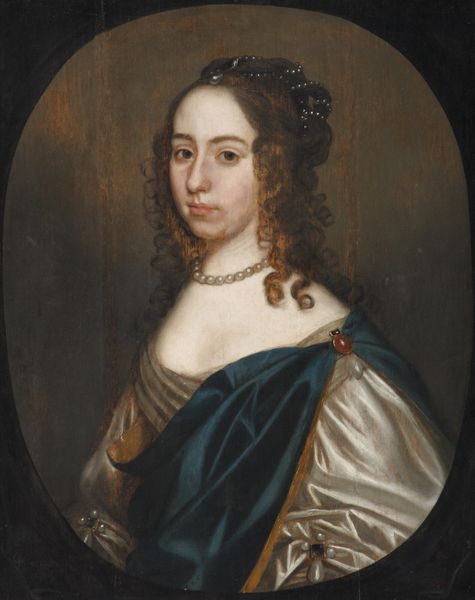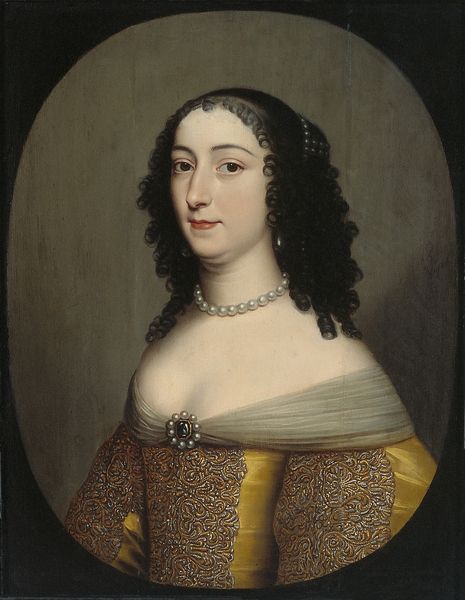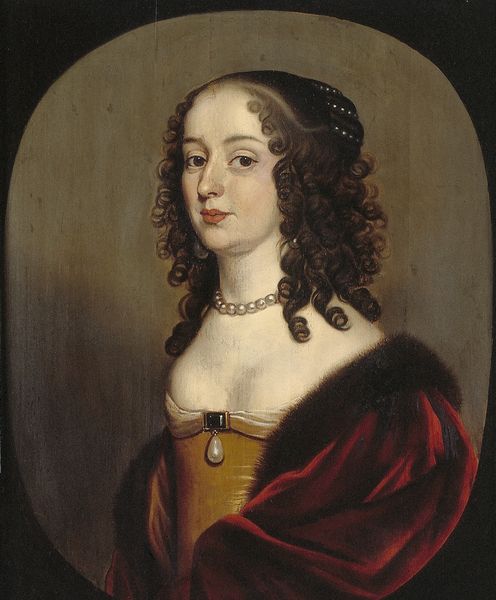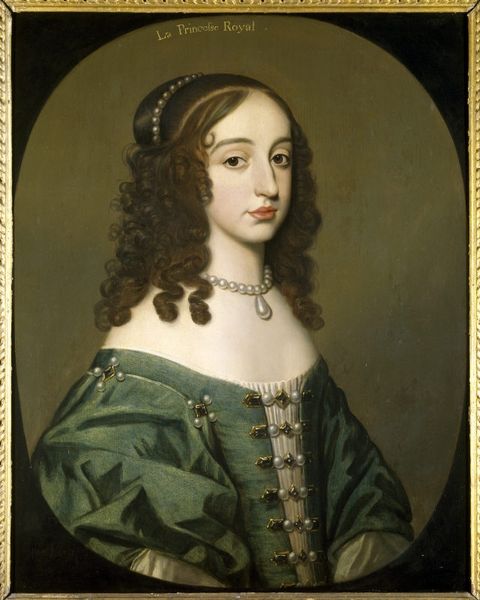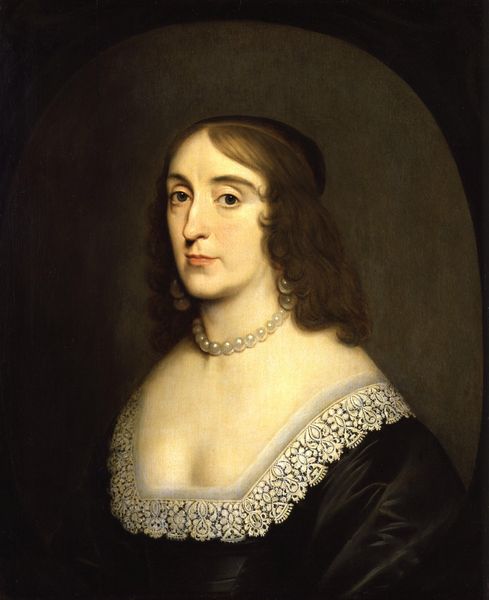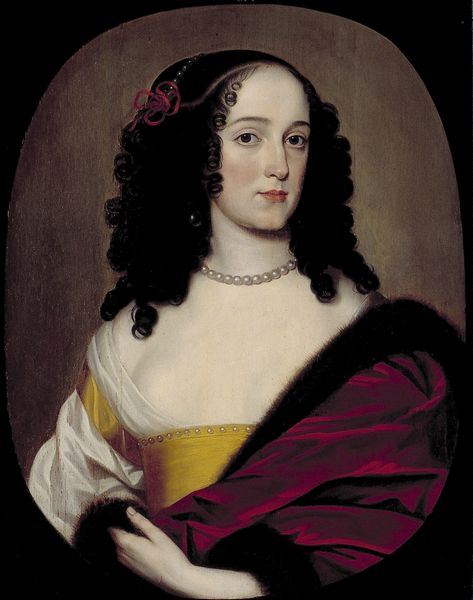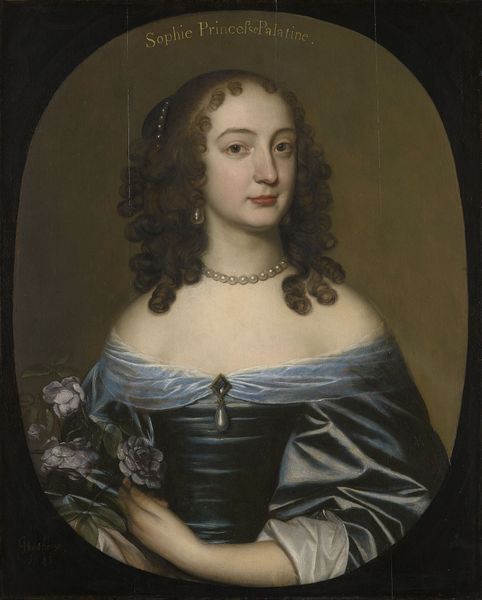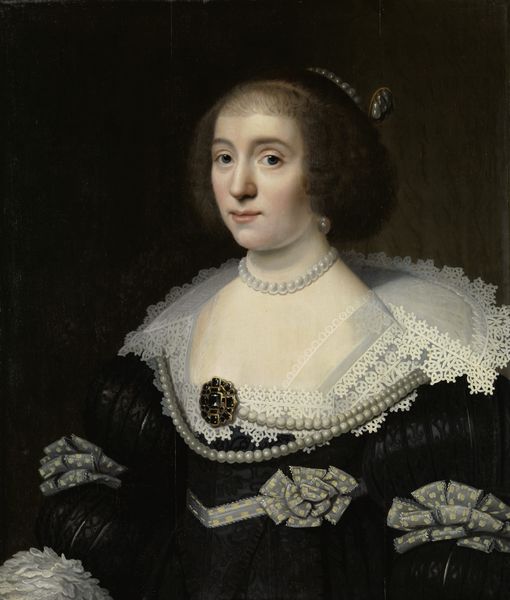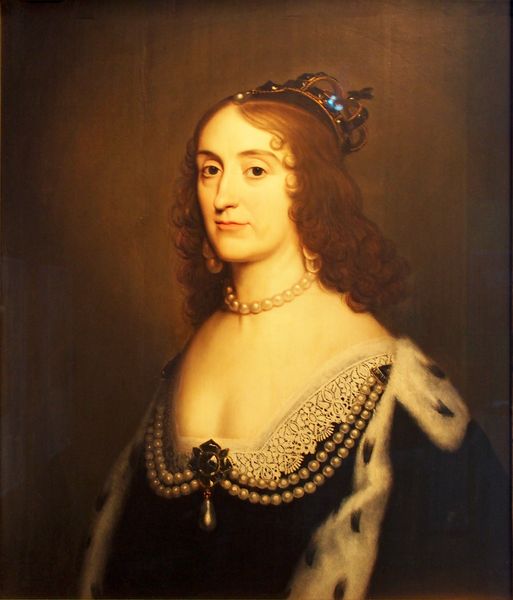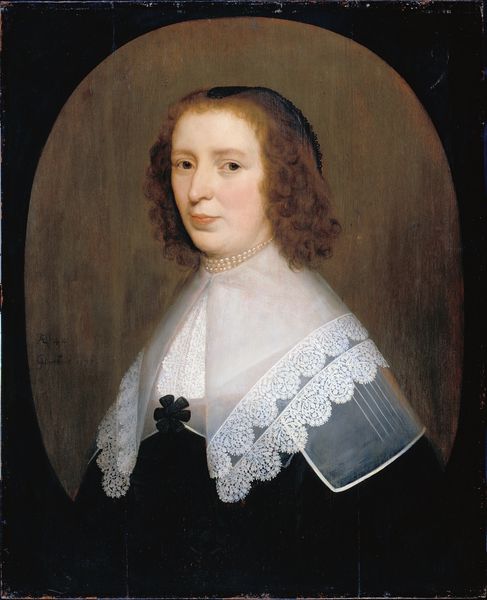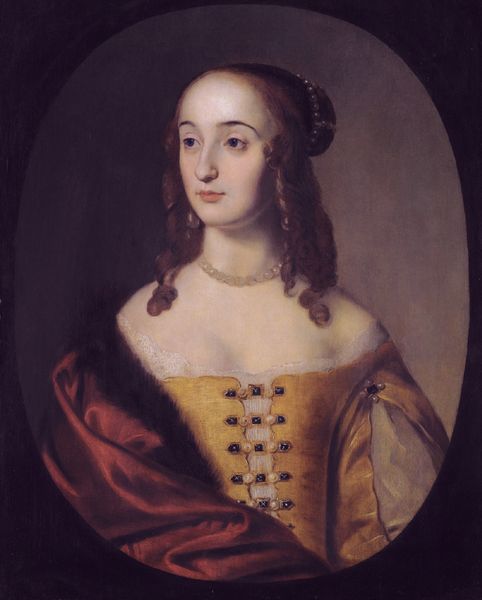
painting, oil-paint
#
portrait
#
baroque
#
painting
#
oil-paint
Copyright: Public domain
Curator: So, here we have "Portret Van Amalia Van Solms", a captivating portrait painted by Gerard van Honthorst in 1651, using oil paints. My first impression is how gracefully formal it is, like a dance step frozen in time. There's a certain reserved elegance that really stands out. What strikes you? Editor: Absolutely, and I'd argue that its Baroque-era formality, as you call it, isn’t just a "graceful dance step". Look closely – the opulent pearls and darkly rich fabric signify not only wealth but, more importantly, the complex power dynamics of the Dutch Golden Age. Amalia wasn’t just posing, she was performing power! Curator: A fair point! Those pearls certainly scream influence, don’t they? I can almost feel their cool smoothness. What is it about the Baroque aesthetic that encourages this kind of… presentation of self? Editor: Baroque, particularly in portraits like this, was a theatre of status. Amalia, as Princess of Orange, needed to visually articulate her legitimacy in a newly forming republic. It’s calculated, every lustrous detail aimed at communicating her elevated position. The lack of warmth almost feels deliberate, like armor. Curator: I see that now, there's this veneer over everything like shiny wax. The artist has skillfully played with light to draw out the sheen of the fabric and jewels but left her face quite matte... And yet, she has such an almost shy demeanor! It seems like such a tightrope walk for the artist. Editor: And what's fascinating is how gender intersects with all this performance of power. Royal women, including Amalia, often navigated incredibly restricted roles; portraiture provided avenues for controlled self-expression but also enforced expectations of comportment and femininity within courtly patriarchy. It wasn’t simple. Curator: That really makes you see past the surface gleam, doesn’t it? It’s a fascinating window into a very specific, and slightly oppressive, world. I initially saw her serenity as a simple elegance, but your insights make me wonder about what lies beneath that poised surface. Editor: Exactly! By peeling back the layers of artifice, we get glimpses of both constraint and resilience, of individual identity intertwined with the demands of history and social expectations. Art becomes a powerful lens for seeing both individual and collective struggles. Curator: It’s easy to get lost in the shimmer, the technical mastery, without really *seeing* the human, and the history, in a work like this. Thank you for helping to draw her out! Editor: My pleasure. The power of art, isn't it, inviting us to truly observe and listen to the stories within the frame.
Comments
No comments
Be the first to comment and join the conversation on the ultimate creative platform.

